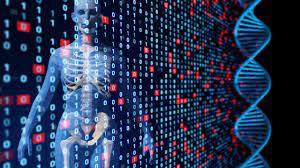Fundamental Aspects Of Regenerative Medicine
 Regenerative medicine has great potential to replace damaged organs, heal tissues, and even normalize congenital defects. Several therapies have already received FDA approval or clearance. They use therapeutic cells to create new tissues, which are capable of maintaining their function and structure. They are used in many conditions, including acute insults and chronic disease. They also have the potential to treat cancer, an area where current therapies have limited success. You may want to check out QC Kinetix (Greenwood) for more.
Regenerative medicine has great potential to replace damaged organs, heal tissues, and even normalize congenital defects. Several therapies have already received FDA approval or clearance. They use therapeutic cells to create new tissues, which are capable of maintaining their function and structure. They are used in many conditions, including acute insults and chronic disease. They also have the potential to treat cancer, an area where current therapies have limited success. You may want to check out QC Kinetix (Greenwood) for more.
The aim of regenerative medicine is to replace damaged organs and tissue through the use of various techniques, including tissue engineering, cellular therapies, and artificial organs. The field is still relatively new, and it involves experts from a variety of fields. Nevertheless, it has the potential to revolutionize the field of medicine.
The first step in regenerative medicine is to extract fat or bone marrow from a patient’s body. This will be done under local anesthesia, which will numb the area to minimize any pain. In some cases, the patient will be given pain medication until the procedure is complete. The risks of regenerative medicine are minimal, and they are typically not life-threatening.
The benefits of regenerative medicine therapies include avoiding the need for surgery or other medical treatments. For example, stem cells and platelet-rich plasma therapy may reduce the need for surgery and may help improve the healing process after orthopedic surgeries. PRP therapy can also help relieve pain. Regenerative orthopedics may shorten the healing process of meniscus surgery or ligament repair. Patients undergo these procedures using their own tissue or donated tissues.
Stem cells are a major component of regenerative medicine. They are capable of directing healing cells to the area of injury or inflammation. Stem cells also have the potential to be manipulated to specialize into specific types of cells and implanted into patients with specific diseases. These cells can also repair injured heart muscle.
The goals of regenerative medicine are to improve the body’s ability to repair itself and replace damaged tissues. This is accomplished by altering the physiology and the innate healing response. This field will eventually merge with cellular therapies to improve health and cure disease. Currently, there are a variety of clinical trials for different regenerative medicine therapies.
While many regenerative medicine techniques are promising, there are still challenges in obtaining adequate quantities of therapeutic cells. For example, it is difficult to obtain sufficient quantities of embryonic stem cells and adult tissues. However, adult tissue-derived cells have several advantages over embryonic stem cells, including safety and accessibility. These two factors make adult tissue-derived stem cells the dominant cell type used in regenerative medicine.
CONTACT INFO
QC Kinetix (Greenwood)
5510 S East St, Bldg A, Suite G
Indianapolis, IN 46227
(463) 235-7160